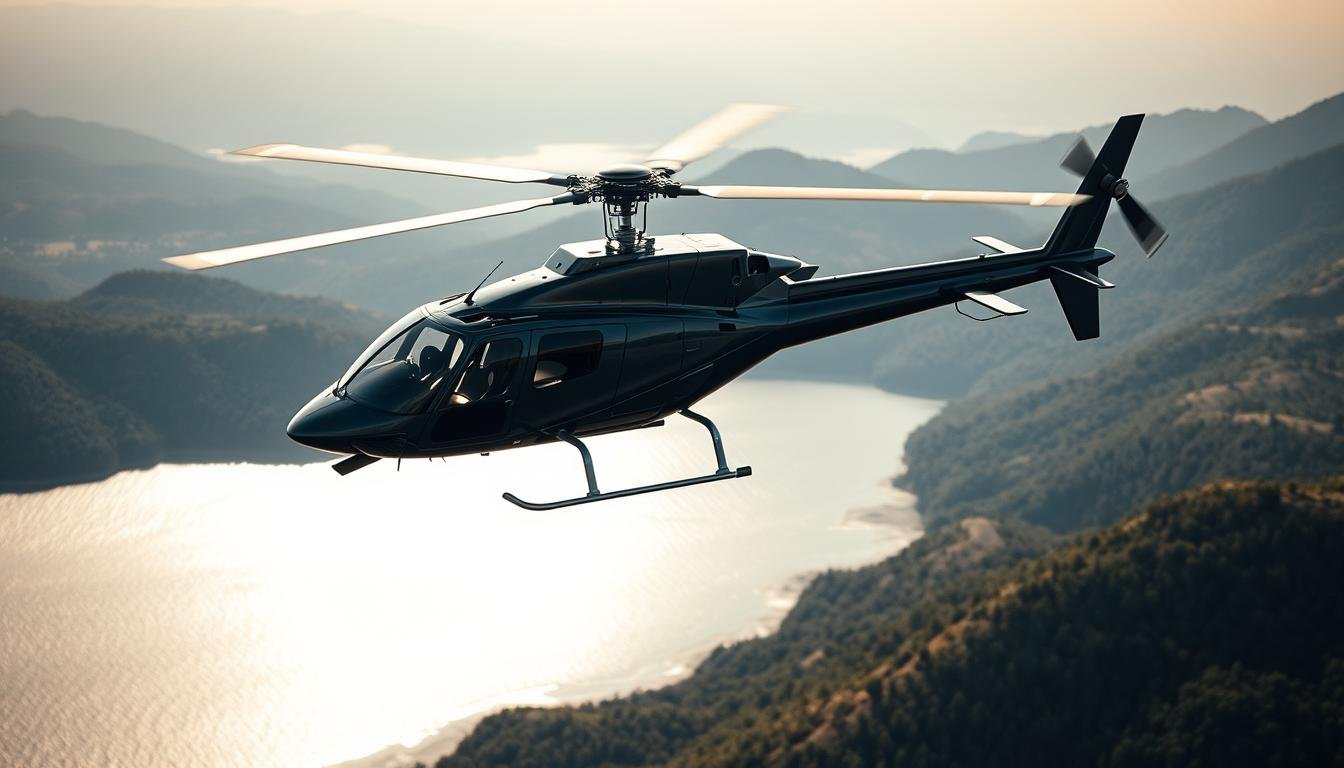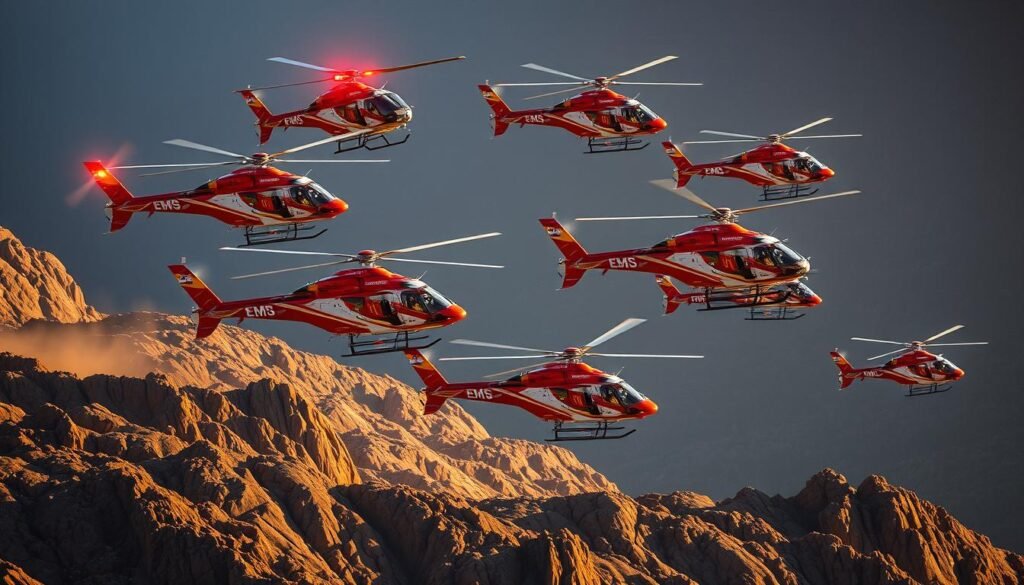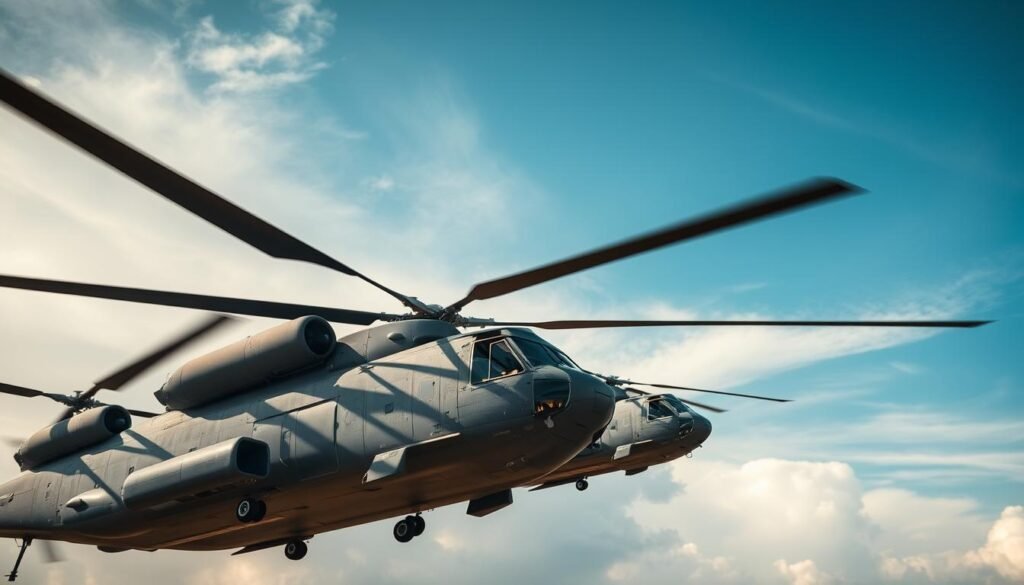One surprising fact: many commercial shoots cut planning time by up to 40% when crews use purpose-equipped aircraft and doors-off options to capture decisive images.
Anthelion Helicopters offers gift cards for scenic tours over Los Angeles and Long Beach that can be redeemed at any time. They focus on flexible maneuvering and clear in-flight communication so pilots can position a photographer for exact camera angles.
The service includes pre-planned routes and custom itineraries. Pilots work closely with photographers to craft shots, reduce setup time, and maximize usable minutes in the air.
The company highlights client work on Instagram and encourages bookings for tailored tours that meet specific creative needs. Doors-off flights remove reflections and help secure clean, high-value shots over iconic cityscapes and coastlines.
Key Takeaways
- Anthelion provides flexible tours and redeemable gift cards for Los Angeles and Long Beach sessions.
- Pilot-photographer coordination ensures precise framing and efficient shoot time.
- Doors-off flights reduce glare and improve image quality for commercial use.
- Pre-planned and custom routes let clients capture multiple locations in one flight.
- Prospective clients can find more information and aircraft options through a detailed guide on top picks for aerial filmmaking.
Helicopters for Aerial Photography
Anthelion conducts door-off operations to deliver unobstructed views that improve contrast and image clarity. This doors-off method removes reflections and gives photographers direct sightlines to skyline and coastline subjects.
Pilot positioning is central. Trained pilots use clear voice cues and steady orbits to line up precise camera angles. That coordination cuts setup time and yields repeatable shots.
Doors-Off Photography For Unobstructed Shots
Removing doors allows cleaner frames and better low-light performance. Photographers use safety tethers and handheld stabilizers while the crew maintains flight profiles.
Pilot Positioning Expertise For Precision Camera Angles
Pilots confirm headings, airspeed, and orbit radius before each pass. Consistent communication speeds up framing and keeps safety first.
Popular Aircraft: R44 Photography Helicopter Setup
The R44 offers visibility, stability, and agile repositioning across dense urban airspace.
| Feature | Benefit | Best Use |
|---|---|---|
| Doors-Off | No glass reflections; improved contrast | High-detail city and coastline shots |
| Pilot Positioning | Repeatable camera angles; smooth arcs | Timed sequences and film passes |
| R44 Setup | Compact footprint; cost-efficient | Multi-location sorties in LA/Long Beach |
| Camera Mounts | Secure pro bodies and long lenses | Low-light and long-exposure work |
Los Angeles And Long Beach Location Coverage
Clients choose primary targets with alternates to handle air traffic and light shifts. Anthelion handles logistics and route planning to maximize usable minutes.
State-Of-The-Art Camera Support And Mounting Options
“Pilots and photographers brief each pass with exact camera settings and shot sequence.”
For operational tips and aircraft choices, see a practical guide to professional techniques and gear in this industry overview professional tips and a list of top models top picks.
Aerial Photography Services, Tours, And Production Support
aerial photography helicopter clients receive mapped flight plans that prioritize high-value locations and efficient use of time.
Anthelion offers pre-planned routes that serve as a clear tour blueprint. These routes align timing to light and airspace windows to increase usable shots.

Pre-Planned Routes And Custom Itineraries To Fit Your Needs
Pre-planned routes reduce guesswork and boost hit rates on priority locations. Teams may also build custom itineraries to match a specific creative brief or inspection trip.
Minutes-Based Flights And Extended Ride Options For More Shots
Clients book by minutes, then extend in-flight when conditions improve. That flexibility secures extra passes and new angles without losing production time.
From Social Content To Film Production: Data, Video, And Photo Capture
Production support scales from quick social clips to broadcast-quality video and photo deliverables.
- Crews collect GPS-tagged data, video, and photos for easy handoff.
- Camera setups are briefed to minimize in-flight changes.
- Post-flight packages include organized files and usage-ready information.
| Service Type | Typical Use | Key Benefit |
|---|---|---|
| Pre-Planned Route | City landmarks tour | Efficient time use; predictable shots |
| Custom Itinerary | Asset inspection or branded trip | Tailored coverage; targeted locations |
| Minutes-Based Block | Short shoots with extension | Flexible airtime; extra passes |
| Production Support | Video and photo capture | Camera guidance; formatted deliverables |
Safety, Experience, And Real-World Results
Every mission begins with a focused safety brief and a clear plan led by seasoned crew. Anthelion emphasizes trained pilots, clear in-cabin communication, and attention to each passenger’s expected result.

Highly Trained Pilots And Clear Communication In The Aircraft
Experienced pilots run concise briefings that set headings, orbit radii, and safety margins. This reduces wasted time and keeps each pass controlled and repeatable.
Years of operational practice inform door-off and standard configurations. Ground staff review equipment handling and in-cabin movement before liftoff.
Passenger Experience: Calm, Comfortable Rides With Coastline Views
Clients report a calm ride and attentive service. A recent review praised Claudia’s warm greeting and Pilot Mr. Tom, who kept a 9-year-old passenger relaxed while highlighting coastal views.
Crews narrate upcoming turns and orbits to orient passengers and photographers. Clear in-flight calls between pilot and shooter align altitude and headings so shots are purposeful.
- Safety: Trained pilots ensure each pass is stable and aligned to requested shots.
- Comfort: Calm ride profiles and friendly briefings help passengers relax.
- Reliability: Aircraft are validated preflight so transitions to active shooting are seamless.
| Area | Practice | Benefit |
|---|---|---|
| Pilot Training | Regular checkrides; clear comms | Controlled passes; consistent shots |
| Ground Briefing | Equipment and movement review | Faster setup; safer in-cabin behavior |
| Passenger Care | Calm narration; tailored attention | Comfortable ride; confident clients |
| Airspace Management | Coordinated time and spacing | Safe operations during busy windows |
Repeat clients return for the consistent balance of safety, comfort, and results. For model choices and scenic tour options, see a helpful guide on best models for scenic tours.
Conclusion
Photography begins and ends with clear planning: trained crews, pilot coordination, and purpose-configured aircraft turn limited minutes into dependable visual assets.
Clients get curated or custom tour profiles that match creative needs and timelines. Booking by minutes gives teams the flexibility to extend a trip when light and conditions improve.
Camera-ready workflows and tight pilot communication keep production efficient. That approach raises the percentage of keeper frames during each pass.
The operator’s fleet supports doors-off and standard setups to handle stills and production shoots while keeping safety central. Deliverables arrive organized and edit-ready to speed postflight work.
Next steps are simple: choose a route, confirm timing, and align your checklist. Then lift to capture the shots the team set out to make.
FAQ
What aircraft are best suited to capture professional aerial images and footage?
Small, maneuverable light helicopters such as the Robinson R44 are popular choices for professional photo and film work. They offer stable flight characteristics, low vibration when properly fitted, and easy access for cameras when operated with a doors-off configuration or specialized mounting rigs. Operators often pair these aircraft with gyro-stabilized mounts and experienced camera operators to ensure consistent, high-quality stills and video.
Can photographers request doors-off flights for unobstructed shots?
Yes. Many operators provide doors-off options to eliminate window glare and obstruction, allowing full-frame lenses and wide-angle compositions. Doors-off operations require extra safety equipment, briefings, and experienced crew; pilots secure the passenger and camera systems and follow strict procedures to maintain safe flight while enabling unobstructed image capture.
How does the pilot’s positioning expertise affect camera angles?
Pilot skill directly influences the ability to hold steady hover positions, execute slow tracking passes, and maintain precise camera angles during complex moves. Pilots trained in aerial cinematography understand sightlines, sun positioning, and framing, and they coordinate with the photographer or director to position the aircraft for optimal light, perspective, and composition.
Are camera mounts and support equipment available on flights?
Yes. Reputable providers supply a range of camera supports, including handholds, suction mounts, and gyro-stabilized gimbals for both stills and high-resolution video. They can accommodate DSLRs, mirrorless bodies, cinema cameras, and drone backups for multi-platform shoots. Equipment availability depends on the operator and should be confirmed during booking.
What locations are commonly covered for commercial shoots near Los Angeles and Long Beach?
Operators often plan routes over iconic coastal areas, urban skylines, beaches, ports, and film-friendly landmarks in and around Los Angeles and Long Beach. Flight plans consider airspace restrictions, permits, and ideal lighting windows, enabling filmmakers and photographers to capture coastline panoramas, harbor activity, and cityscapes with professional results.
How are flight routes and itineraries customized for specific shoots?
Providers develop pre-planned routes based on the client’s shot list, time of day, and production goals. They build custom itineraries that optimize flight time for sunrise or sunset conditions, include multiple passes over targets, and allow buffer time for retakes. Coordination with local aviation authorities and ground teams ensures plans comply with regulations.
What are the common flight durations offered for photography and video work?
Services typically offer short, minutes-based flights for quick coverage and longer ride options for comprehensive shoots. Standard packages often start at 15–20 minutes for a focused sequence, with extended flights up to an hour or more for complex productions. Flight duration affects the number of setups, lighting windows available, and total usable shots.
How do operators handle data capture for film production and social content?
Operators support both high-bandwidth video capture and high-resolution stills. Crews can offload media on location, provide secure transfer options, and supply metadata and timecode syncing for post-production. Many teams coordinate with production managers to ensure continuity between aerial footage and ground-shot material.
What safety measures are in place during photography flights?
Safety protocols include pre-flight briefings, life vests for coastal flights, mandatory use of harnesses for doors-off work, and strict weight-and-balance calculations. Pilots maintain VFR or IFR procedures as required and follow established emergency protocols. Providers also verify insurance coverage and maintenance records before each mission.
What level of pilot training and experience do aerial photography pilots have?
Photographic pilots usually hold commercial rotorcraft certificates, instrument ratings where applicable, and substantial hours in low-level scenic or cinematography operations. Many have specific training in aerial camera work and have logged hundreds to thousands of flight hours coordinating closely with camera operators and directors to achieve precise results.
What can passengers expect from the in-air experience during a shoot?
Passengers typically experience calm, controlled flights with clear communication from the pilot and crew. Operators strive to make rides comfortable and productive, providing headsets for the crew, briefing on body positioning for steady shots, and information on weather and lighting. Coastal flights offer impressive shoreline views while maintaining professional shooting conditions.
Are there restrictions on the types of cameras and lenses allowed on board?
Restrictions vary by operator but usually accommodate common professional gear such as mirrorless systems, full-frame DSLRs, and cinema cameras. Very large cinema lenses or heavy rigs may require special mounts or aircraft weight-and-balance assessments. Clients should disclose equipment details in advance so the provider can confirm compatibility and safety.
How far in advance should a production book a photography flight?
Productions should book as early as possible, especially for peak shooting windows like golden hour or busy locations. A minimum lead time of one to two weeks is common for standard shoots; larger film productions requiring permits or specialized rigs may need several weeks to coordinate airspace approvals and support equipment.
What permits or approvals are required for commercial aerial shoots?
Commercial aerial operations often require FAA waivers or authorizations, local filming permits, and coordination with airport or coastal authorities. Experienced operators assist with permitting and airspace clearances, providing documentation needed by film offices and production insurance providers to ensure lawful and efficient operations.
How do weather and lighting conditions affect scheduling and shot quality?
Weather directly impacts flight safety and visual outcomes. Photographers and pilots monitor wind, visibility, and cloud cover to determine go/no-go windows. Ideal lighting—such as sunrise and sunset—provides the best visual depth and color; operators plan schedules to align with those windows and include contingency plans for delays or reshoots.
Can aerial teams integrate with ground production crews during a shoot?
Yes. Aerial teams commonly coordinate with ground units to plan shots, synchronize action, and ensure continuity. Ground crews handle logistics, talent movement, and equipment staging while aerial crews focus on camera work and airspace compliance. Clear communication protocols and a shared shot list keep both teams aligned.
What insurance and liability coverage should clients expect?
Professional operators maintain commercial aviation liability insurance and hull coverage appropriate to their aircraft and operations. Clients often require proof of insurance as part of contracts, and productions may add additional liability policies. Providers can furnish certificates of insurance to satisfy production or permit requirements.
How are final images and footage delivered after the flight?
Delivery options include high-speed file transfer, hard-drive courier, or on-site transfer immediately after the flight. Crews provide raw and/or edited files depending on the service level. For film production, files are typically delivered with synced timecode and metadata to streamline post-production workflows.
What should photographers bring on a shoot to maximize results?
Photographers should bring securely fastened camera straps or harnesses, lenses with image stabilization, spare batteries and memory cards, and polarizing or neutral-density filters as required. They should also have a clear shot list, wardrobe appropriate for wind exposure, and any permits or release forms for talent or locations. and filmmaking. From large productions to smaller commercial projects, the flexibility, stability, and versatility of helicopters make them the preferred choice for professionals seeking unique and high-quality aerial footage. With top models like the Airbus H125 and Bell 407 leading the way, aerial photography continues to push the boundaries of creativity and technology.
Related Articles
- Medical Transport Helicopters: Critical Features and Models for Emergency Flights
- Helicopter Drones: The Future of Unmanned Aerial Systems
- Helicopters for Offshore Oil and Gas Operations: Transporting Workers and Equipment
- Helicopters in Tourism: The Best Models for Scenic Tours
- Helicopters for Police and Law Enforcement: Surveillance and Patrol Capabilities
More from This Category
- The Evolution of Attack Helicopters: Key Models and Their Capabilities
- Utility Helicopters: The Workhorses of the Sky
- Trainer Helicopters: The Best Models for Learning to Fly
- Helicopters for Aerial Photography and Filmmaking: Top Picks for Capturing the Perfect Shot
- Luxury Helicopters: The Best Models for Private and Corporate Use
- Heavy Lift Helicopters: Moving Large Cargo and Equipment
- Agricultural Helicopters: Aerial Spraying and Crop Management
- Rescue and EMS Helicopters: How They Save Lives in Critical Situations
- Military Helicopters: Key Models and Their Combat Roles
- The Different Types of Helicopters: From Light Utility to Heavy Lift



